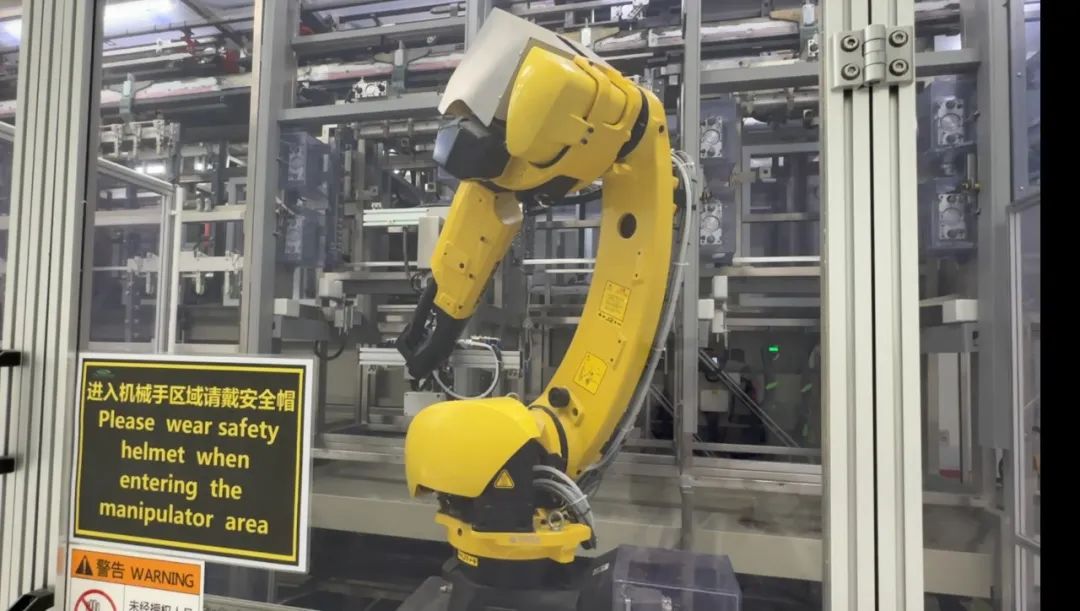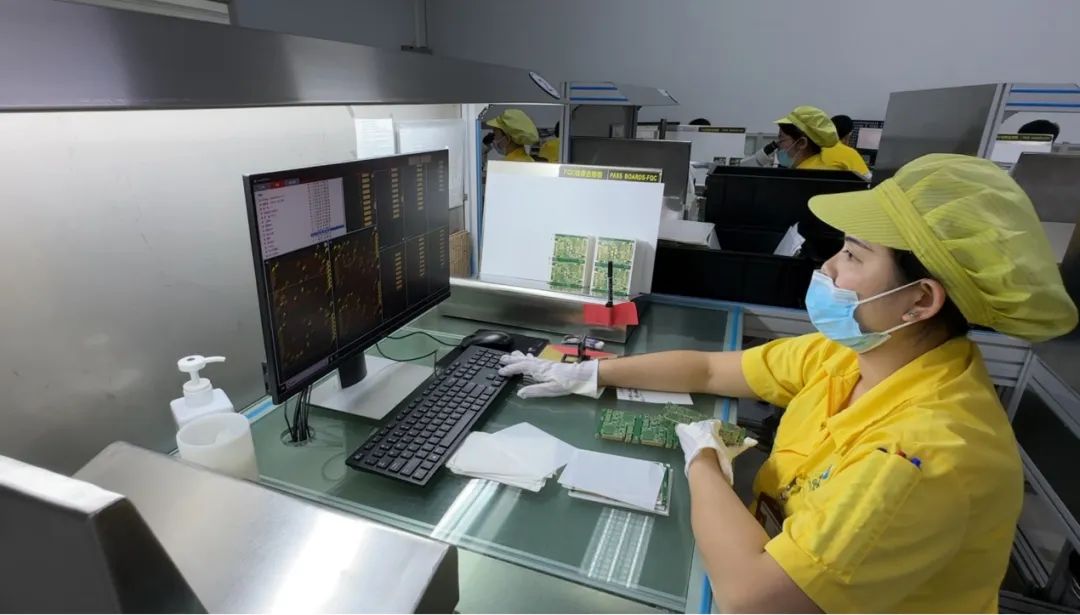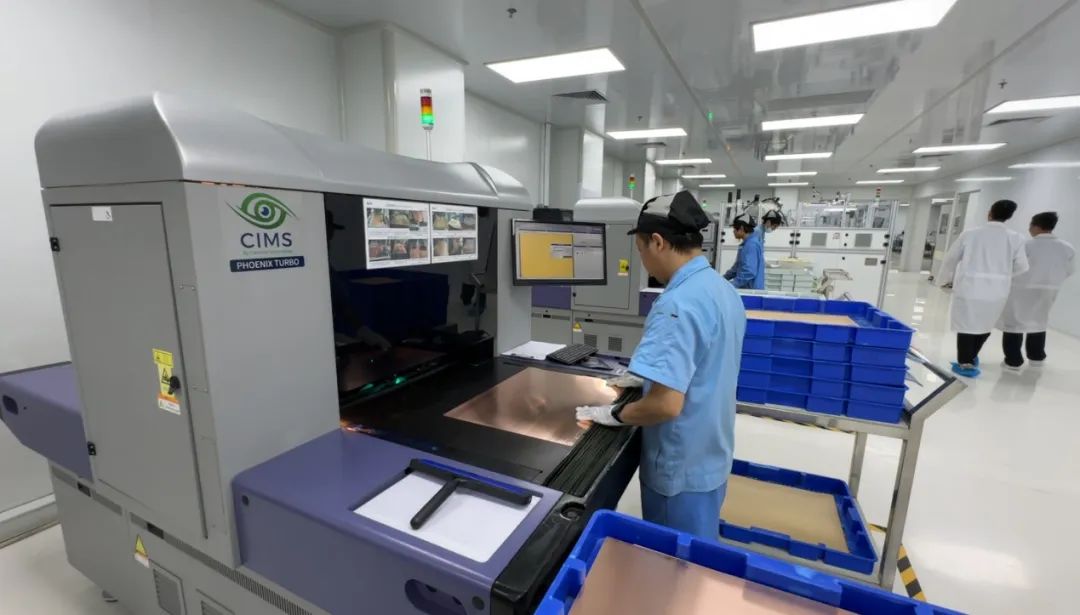
Introduction:The new wave of technological revolution and industrial transformation driven by artificial intelligence, represented by large models, is developing deeply, presenting immense opportunities and disruptive challenges across various industries. In the industrial sector, artificial intelligence is a key variable in advancing new industrialization, and the implementation of industrial large models will provide new pathways for manufacturing companies to explore new industrialization. China Electronics News has launched a column titled “Artificial Intelligence Empowering New Industrialization,” which delves into the frontline, factories, and enterprises, providing comprehensive coverage of the vivid practices of artificial intelligence technologies represented by large models in the industrial field.
In the office, the large model operates rapidly, deconstructing and analyzing complex customer demands into clear and understandable production parameters; in the production workshop, workers in bright light blue and light yellow uniforms move around the equipment, and under the manipulation of robotic arms, printed circuit boards (PCBs) quietly take shape; in the quality inspection workshop, cameras take on the heavy inspection work, with display screens constantly flashing, improving the filtering accuracy of false defects in circuit boards to over 80%…
On April 17, a group of reporters visited the production workshop of Dongguan Senmashi Ge Li Fei Circuit Co., Ltd. (hereinafter referred to as “Senmashi”) to explore the deep application of artificial intelligence technology in the PCB industry. Amidst a bustling production scene, the application of large model technology in vertical fields is beginning to show promise.
Customer Document Processing Completed in 10 Seconds
“We are a high-end PCB manufacturing company focusing on producing complex high-tech products, and each customer’s demand varies, so interpreting complex drawings and converting them into our internal production format becomes a crucial step,” said Li Ping, manager of the Intelligent Engineering Department at Senmashi, to a reporter from China Electronics News.
Opening a manufacturing requirement document, all-English data and charts leap into view, with a single tone, crowded uppercase letters, and many technical terms mixed in; just looking at it for a short while can be overwhelming. Li Ping told reporters that in the past, handling such documents manually was a heavy task. “Even experienced veterans in the industry often need several hours to interpret, and they also need to manually input the data into the database,” Li Ping said. “If any errors occur during these steps, it can lead to serious consequences of complete product batch scrap, so manual verification is an essential procedure. After several steps, it not only wastes time and effort but also incurs high labor costs.”

After applying Tencent Cloud’s TI-OCR (Optical Character Recognition) large model testing system, in just over ten seconds, the large model provided a “translation” of the customer’s drawing, succinctly noting key parameters such as board type, board thickness tolerance, surface treatment, solder mask, and cycle position. “The OCR large model outputs these key parameters in a standard format, directly saving them in the system database, allowing engineers to conduct re-inspection directly. This not only ensures the accuracy of information output but also greatly reduces the difficulty engineers face in interpreting drawings,” Li Ping stated.
In fact, people are not unfamiliar with OCR technology: smartphones can often directly recognize text in photos, and commonly used social tools like WeChat and QQ have long implemented OCR “extract text” functions… However, for OCR technology to transition from “life” to “production,” large models are the “finishing touch.”
A Tencent Cloud representative told reporters: “The recognition requirements in production scenarios are more complex. Traditional OCR consists of multiple modules, and the text detection module can easily miss or misdetect in multi-line text scenarios, irregular shape scenarios, and mixed-size character scenarios; the recognition module cannot infer based on whole image information combined with context when recognizing overlapping text, obscure characters, and low-quality images, further limiting recognition capabilities. The OCR large model not only makes text recognition and extraction more accurate in complex scenarios but also rapidly expands application scenarios, evolving towards higher precision and more intelligent extraction.” Reporters learned that the OCR large model has already been widely applied in industrial equipment inspection scenarios, such as photovoltaic installations and elevator inspections.
Li Ping told reporters: “Even with the same parameters, each drawing expresses them differently; unifying them into a standard format relies on the help of large models. Senmashi has been deeply involved in the PCB industry for 18 years, leveraging rich data accumulation to train and optimize the OCR recognition model using different materials, making the model more aligned with actual application needs.”
“Most False Defects Filtered by the Large Model”
Entering Senmashi’s inspection workshop, quality inspection supervisor Zhou Houmei was carefully checking the circuit board on her computer screen, with densely arranged copper solder points on the dark green board, the smallest of which was no larger than a pinhead.

Senmashi quality inspection workers are checking circuit board solder points
Zhou Houmei, who has worked in quality inspection for 17 years, has witnessed the shift from manual inspection to high-definition cameras. “In the past, each point needed to be confirmed by the eye, and checking a board often took over ten minutes.” Speaking of the assistance of large model technology in the quality inspection process, Zhou praised, “Now, most false defects are filtered out by the large model; just confirming a small portion of points is enough, and checking a board takes only 30 seconds, saving time and effort, and it’s much easier on the eyes.”
Li Ping told reporters: “As product lines become finer, it is very difficult to find defects on circuit boards by relying solely on visual observation; optical automatic detection must be used for scanning and checking. But machines must ensure that true defects are not missed while preventing excessive sensitivity that leads to many false positives, where often only 20 out of 100 reported points are real. However, as the final inspection process, even knowing there are false reports, workers are still needed to verify, leading to inefficiencies.”

In this context, large models have become the “breakthrough path.” Li Ping explained: “Using large models for image processing is the most typical application of large models in the PCB industry. We use large model image processing technology to learn and filter out most false defects, thereby reducing the workload of quality inspection workers, lowering the difficulty of work, and improving efficiency.”
Li Ping told reporters that when they first applied large models to filter false defects, the model’s accuracy rate was only 30%; however, after continuous adjustments and learning, with training data reaching hundreds of thousands of images, they have now achieved over 80% filtering rate. “Our goal is to achieve a filtering rate of over 90% with large model judgments.” Li Ping’s eyes sparkled when discussing future optimizations for large model quality inspections.
PCB Industry Parameter Accumulation Almost Starts from Scratch
Even though Senmashi has made some achievements in the application of large models, Li Ping still believes that the application of large models in the PCB industry is full of challenges: “Taking the OCR model as an example, accurate judgment requires data accumulation. Currently, our reserve of professional knowledge in the industry is still far from sufficient. Unlike other industries that may already have a certain data foundation, the parameter accumulation in the PCB industry is almost starting from scratch.”
Senmashi’s factory director, Yang Zhijian, called for the establishment of a truly deep and applicable industry model: “The application of large models in the PCB manufacturing industry does not require a very large parameter set but has high demands for data quality. Collecting such data cannot rely solely on one company; I hope that regulatory authorities or industry associations can take the lead in collaboration with enterprises and model suppliers to integrate the professional data of upstream and downstream enterprises in the industry chain, breaking down the ‘standard barriers’ in the industry to form a truly dedicated model for the PCB manufacturing industry.” He stated that China’s real economy has significant advantages and has accumulated a wealth of high-quality industry-specific data in practice. Once an industry-specific large model is implemented, it will undoubtedly bring significant benefits and new core competitiveness to enterprises.
Based on this, Senmashi’s strategic partner, Tianheng Intelligent Equipment (Shenzhen) Co., Ltd., has teamed up with Tencent to introduce Tencent Cloud’s large model to assist in intelligent algorithm solutions. Tencent Cloud’s industrial key account director, Gu Songsong, stated: “For artificial intelligence to truly land in specialized vertical fields, it must form industry-specific ‘small models.’ Tencent will continue to play the role of a ‘toolbox,’ leveraging technical capabilities and advantages to refine better products with users, empowering the manufacturing industry to achieve rapid artificial intelligence transformation.”
Regarding Senmashi’s future plans for deep applications of artificial intelligence, Yang Zhijian has a clear direction. He told reporters that the current large model applications are still in the initial stages, only creating benefits for specific links; in the future, he hopes that large models can participate more in aspects beyond the production process: “If artificial intelligence technology can be introduced into management and other areas, there will be significant room for improvement in product quality, production efficiency, and operational benefits in the PCB industry.”
Further Reading:
Cabin Integration Proposes ‘Core’ Requirements
Satellite Manufacturing Accelerates with New Innovations | Decoding Commercial Space
Author: Zhang Qiwei
Editor: Zhao Chen
Design: Maria
Supervisor: Lian Xiaodong
